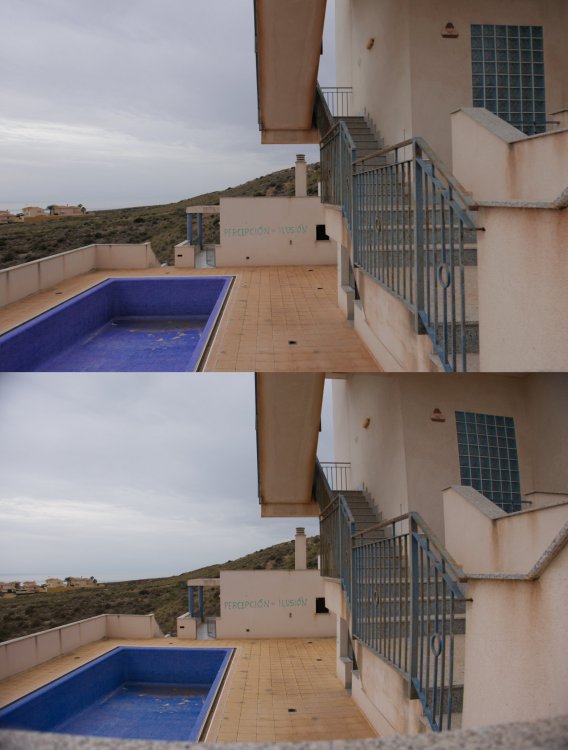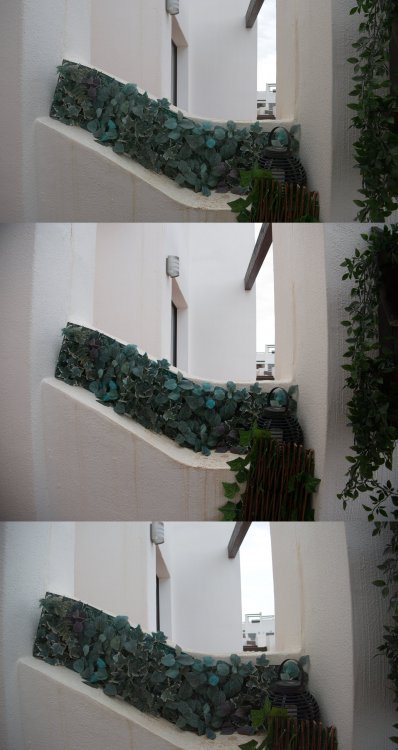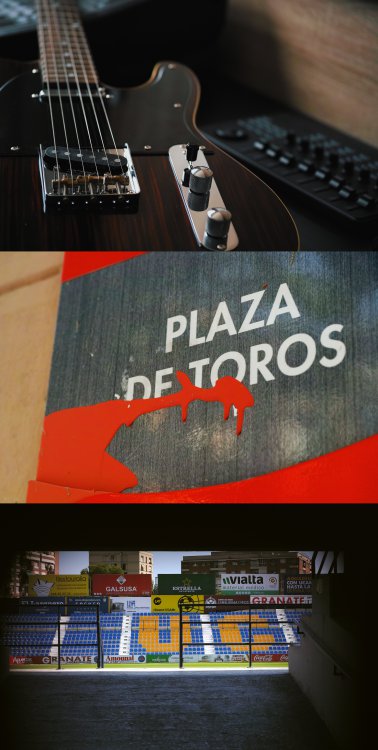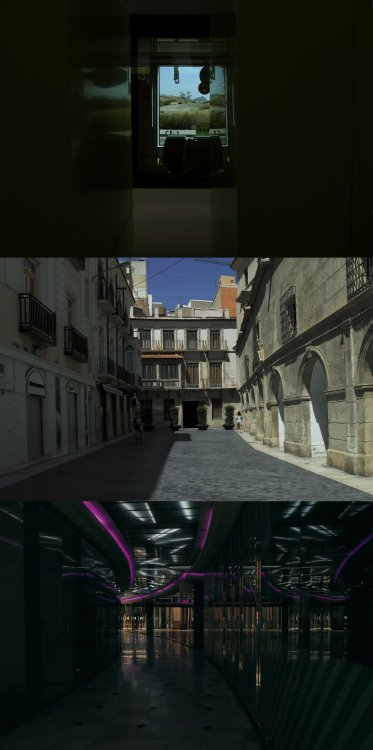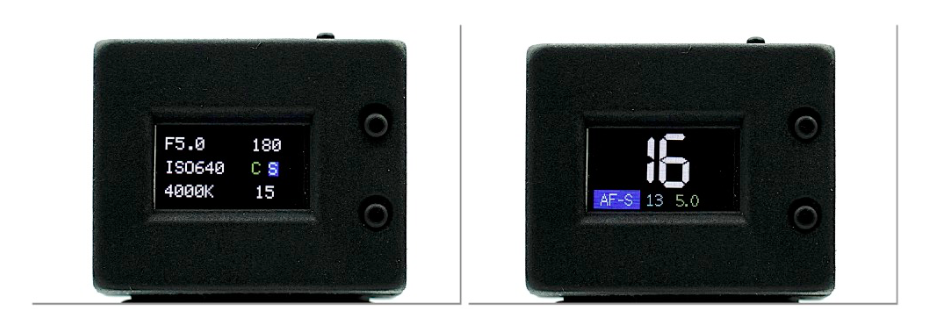-
Posts
5,964 -
Joined
-
Last visited
Content Type
Profiles
Forums
Articles
Everything posted by BTM_Pix
-
-
Sounds like you've rolled your own then !
-
Not exactly a full blown holiday but had a few days away so took the Osmo Pocket and the Freewell anamorphic adapter to test this theory out and these are grabs from 4K/24p videos. It does OK and its certainly unobtrusive enough in terms of carrying it and using it without attracting any attention. The problem with the Mark 1 though here is that the FOV isn't quite big enough (which is something the vlogging/selfie crowd didn't like about it) so you can end up shooting low and up which fucks the verticals up. The Mark 2 with its wider lens and its ability to use ND and anamorphic simultaneously (its either or with the Mark 1) is now showing me a lot of ankle.
-
Here is an example from my Sigma FP shooting simultaneous JPEG+RAW stills with the JPEG on the top and the RAW on the bottom. The only differences are the expected ones regarding colour, contrast, WB etc baked into the JPEG by whatever profile I had active in the camera at the time. This next one is from yesterday on my LX100 shooting RAW+JPEG, again straight out of camera with the JPEG on the top and the RAW on the bottom. With this one we again have the expected differences from the JPEG profile but obviously from the RAW you can see the large amount of optical correction that the camera is performing to remove the distortion etc of the lens for the JPEG. From the point of view of operating the camera, this is irrelevant as it has happened before it hits the EVF or LCD so your framing view will be of the corrected image. In terms of the JPEG or if you are shooting video then, again, its an irrelevance as the corrections are baked in. For RAW files though, the corrections are not applied but they are only a click away in your editing software so, again, its no big deal. The problem would come though if you somehow managed to remove that lens and put it on a camera that doesn't have the correction built in. Which brings us to using MFT lenses on a Pocket 4K. I've just gone outside to do this quick and dirty illustration of a typical example with the Panasonic/Leica 12-40mm f2.8-4 on my Panasonic GX80 shooting RAW+JPEG and Pocket 4K shooting CDNG. On top we have the JPEG from the GX80, then the RAW from the GX80 in the middle and finally the CDNG from the Pocket 4K on the bottom. (* I was shooting 16:9 stills on the GX80 with regard to the JPEG but the RAW file is still 4:3) Ignore the framing and colour differences as it was just a quick handheld test but as you can see the in camera corrections have taken a large amount of the distortion visible in the RAW away when producing the JPEG. However, this is not the case with the P4K frame and without the in built correction the distortion is there in all its glory as it was with the RAW file on the GX80. Of course, you can perform the corrections yourself on the P4K footage when you are editing but its another step and will have to be done on every clip. There is also the penalty of the correction necessitating some degree of cropping in most cases so, unlike the cameras with built in correction, you will have to take this into account for your framing when shooting. The degree to which correction is necessary will vary a lot from lens to lens and obviously wider angle lenses will need closer attention hence why I would recommend checking each particular lens on the P4K itself before buying to make sure you are comfortable with it. I think the Voigtlander 17.5mm is quite popular on here with people using MFT cameras so if someone could do the same RAW+JPEG still on a GH5 etc then you'd have a fair idea of how it will behave uncorrected. I think a few people use it with the P4K too so that would obviously be even more indicative.
-
I think the LX100 is worth a look if you are looking to do street photography. It has a standard 24-70 FOV zoom range lens that is f1.7 at the wide end and f2.8 at the long end and, as has been discussed on here multiple times, its a great lens that happens to have a free body attached. Control wise it has dedicated aperture ring, shutter speed and exposure compensation dials so its really quick to use and, as they are more substantial than those of the GR, I prefer it operationally over the GR. You'll lose the thinner form factor of the GR by virtue of the size of the lens but the actual camera body is more or less the same and the LX100 is still on the plausible side of pocketable. It is certainly far more compact than even a small MFT body like the GX85 with an equivalent 12-35mm f2.8 lens on it. What you will gain over the GR is a serviceable EVF and 4K 24p video recording when you feel the need. The clincher really is the price in that, although they've gone up in price like most used products in the past year, you can still pick up a good condition LX100 mark 1 for about £250 or less. For context, that is way less than half the price of a used version of the 12-35mm f2.8 lens let alone the cost of an MFT body to mount it on. A word of caution regarding using the P4K with native MFT electronic lenses such as the Panasonic and Olympus etc is the amount of lens corrections that those MFT cameras do, particularly on wide angles. The P4K does not have any of those corrections so if you do go for a P4K check any prospective lens on the camera to make sure you are comfortable with the uncorrected performance of it.
-
Thanks. Its more a case of revisiting hard drives and finding stuff I'd been doing with the XT-2 before I fell out with Fujifilm ! Looking at some of it does make me think "well I've got all the redundant glass so maybe a used X-T4 at the right price might be worth picking up". But then I will inevitably think "Or...I could sell all that and use the additional cash I was going to send on an X-T4 and be a long way towards being able to get a GFX100S instead". You know how that goes. I think it is definitely going to be the holiday camera setup from now on if such a thing as holidays ever return ! The only downer is that you can't use NDs with it. But the new version they do for the Osmo Pocket 2 does allow that as you get small slivers of ND that mount magnetically on the rear of the anamorphic element. So, you know how that will go ! In general it isn't dramatic when it comes to flaring. But obviously if you point a torch etc directly at it then you will end up with more flares than a Northern Soul all nighter at Wigan Casino.
-
-
Sigma 50mm f2.8 APS-C Lens * * Fixed lens on the Sigma DP3 Merrill. 75mm FOV but easily enough resolution for 105mm when you need it. Quite decent macro performance too.
-
Sigma 19mm f2.8 APS-C Lens * * Fixed lens on the Sigma DP1 Merrill. 27mm FOV but with the resolution in the camera for it to be 35mm when you need it.
-
Please fuck off with the "inserting dubious link into my quoted message" stuff.
-
Sigma 14mm f4 APS-C Lens * * Fixed lens on the Sigma DP0. Shot in 65x24 AR on the DP0 and posted as an FYI for anyone interested in doing Hasselblad XPan style stuff without dropping £4K 😉
-
-
Here is a short comparison of them on a Sony Venice. They look quite different so if you happen to prefer the look of version 1 anyway then you are in luck financially.
-
Just buy a UMP12K and fake the multi cameras 😉
-
Please don't waste your time posting responses to this arsehole. His entire posting history consists of inserting those same dodgy links into threads that he has started.
-
Ah...oops !
-
The price has been almost cut in two and it is now $5995. No idea whether this is because it wasn't selling, or to bring into line with the newer Sony and Canon offerings or whether they are going to release a 16K version but it is now a very, very interesting option. You can say what you want about no one needing 12K blah blah blah but the (extreme) re-framing and stabilisation options offered by the 12K image are very practical and it ticked an awful lot of boxes anyway with its internal ND, ProRes and BRAW, professional I/O Its not going to be for everyone of course as the "I want a full frame camera with IBIS, e-ND, sentient Autofocus and small enough to shove up a mouse's arse" fantasies are in no way going to be met here but for those who do have a need for a camera of this type, its now put the cat amongst the pigeons in that area with this price drop. Theres is a very comprehensive run through of it here from the good people at CVP : EDIT <STRUCK OUT THE PRORES THING AS IT DOESN"T HAVE IT>
-
Slightly later than planned as a couple more things were added but AFX v1.7 is now available. There is a quick run through of the new FOCUS RECORDER here : The full release notes for AFX v1.7 are below : (All camera types/Blackmagic Cameras With v7.3 installed) New "FOCUS RECORDER" function to enable the real time recording and playback of up to two minutes of focus movements. The "FOCUS RECORDER" is accessed through the newly expanded "AFX ADJUSTMENTS MENU". New "GLOBAL OFFSET" function to provide -20/+20 cm adjustment to compensate for mounting the AFX in a different position from the original calibration point. This function is global so affects all lenses and is in addition to the individual offset available when loading a lens. The "GLOBAL OFFSET" is accessed through the newly expanded "AFX ADJUSTMENTS MENU". New "TURBO" option added to "CALIBRATION MODE" types to allow calibration at 50 ("PRECISION"), 25 ("FAST") and now 15 ("TURBO") points. Please note that although the AFX interpolation functionality obviously generates additional focus positions between these calibration points, it is recommended to use the PRECISION mode to provide greater accuracy with very wide aperture lenses. Navigation between "CALIBRATION POINTS"can now be both forward and backwards by pressing the A button on the R1 to move forward and the B button on the R1 to move backwards. Current "CALIBRATION TRACK" can be cleared and reset to its initial starting point by pressing the LOWER TRIGGER on the R1. Navigation between manufacturer names in "CAMERA" and "LENS" fields can now be both forwards and backwards by a SHORT press of the A button on the AFX to move the the next name and a LONG press of the B button on the AFX to move to the previous one. Inverted screen mode status is now stored as a global preference and recalled on each boot.
-
The live video walkthrough of the QuadLock functionality is here The AFX v1.7 firmware update will be released on Wednesday 21st and includes a possibly interesting new focus function.
-
You need to be in Focus mode rather than Control mode. For the P4K, you can toggle between the two modes by either a short press of the B button on the AFX itself or a long press of the upper trigger on the R1. (Page 23 of the User Guide by the way 😉 ) The current mode you are in is indicated when you are on the Control screen (left) by "C" or "F" below the shutter angle and if you are in the Focus screen by the T0-T3/N transition value being shown next to the aperture display in the bottom right hand corner.
-
The rear LCD is fucked so be my guest and I'll claim it on the insurance ! Being a purist, not being able to chimp with it doesn't bother me and just adds to the retro experience. If I was a completist, I'd probably send the SD card off to someone and wait a week for them to send it me back before I could look at the images 😉
-
I was thinking that the TechArtPro E to Z adapter could give it a lot more lens options but then found this on their product page. I'm guessing if it doesn't work with the Z50 then it won't work with this new pseudo-Df either. Sigma making their f1.4 APS-C primes in Z mount might make it more interesting but they don't seem in a hurry to do that so without a lens lineup this doesn't stack up to Fuji's offerings. And I say that as someone who absolutely loves his Nikon Df. The price isn't far off what you can picked up a used Z6 for these days either. But.... The TechArtPro adapter that does work with the Z50 (and presumably this one) is the Leica M to Z adapter so that would make it interesting for someone who wants the compact retro experience with appropriately sized primes to match but with the bonus of the adapter now providing them with AF as well. With a bunch of cheap adapters this also extends that functionality to other vintage lenses (including old Nikkors too of course) so it could well find a niche there. Hang on, I might have talked myself into getting one !
-
There could be. There could be one that we may release based on something that we previously did for the PBC but didn't release.
-

Death by 1000 Canon Fanboys and Philip Bloomers [EOSHD on Youtube]
BTM_Pix replied to Andrew Reid's topic in Cameras







